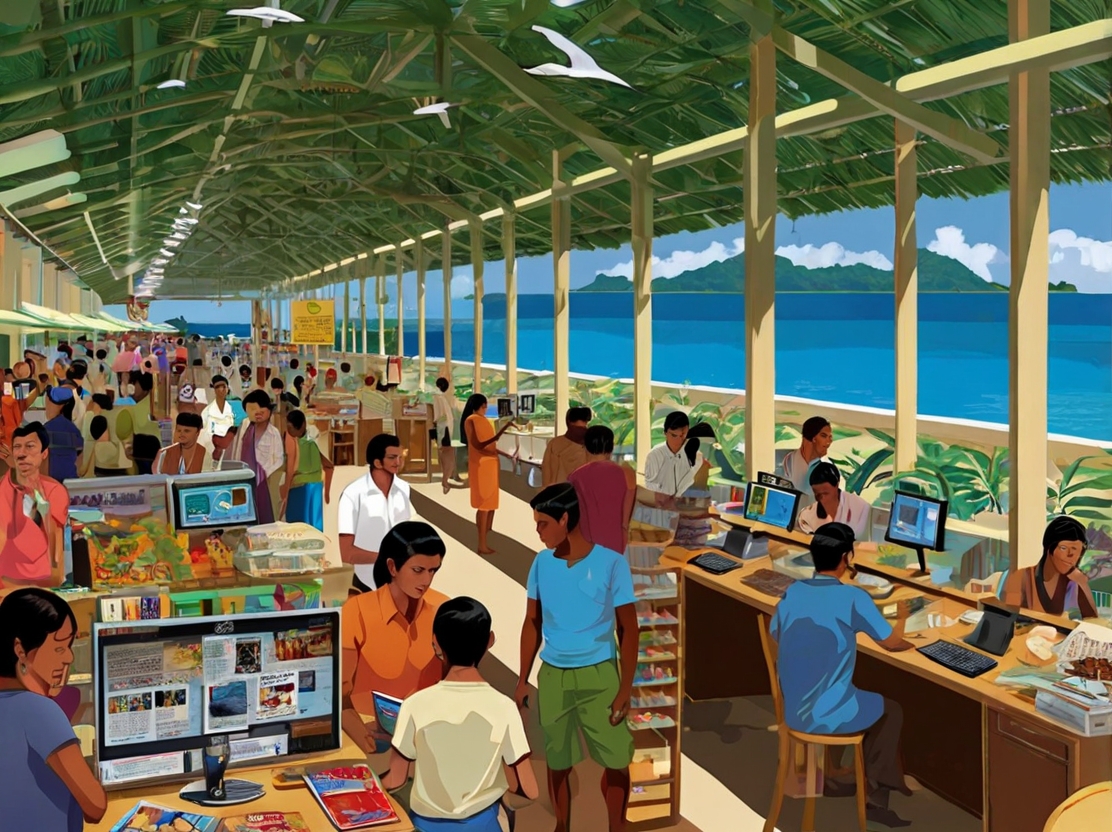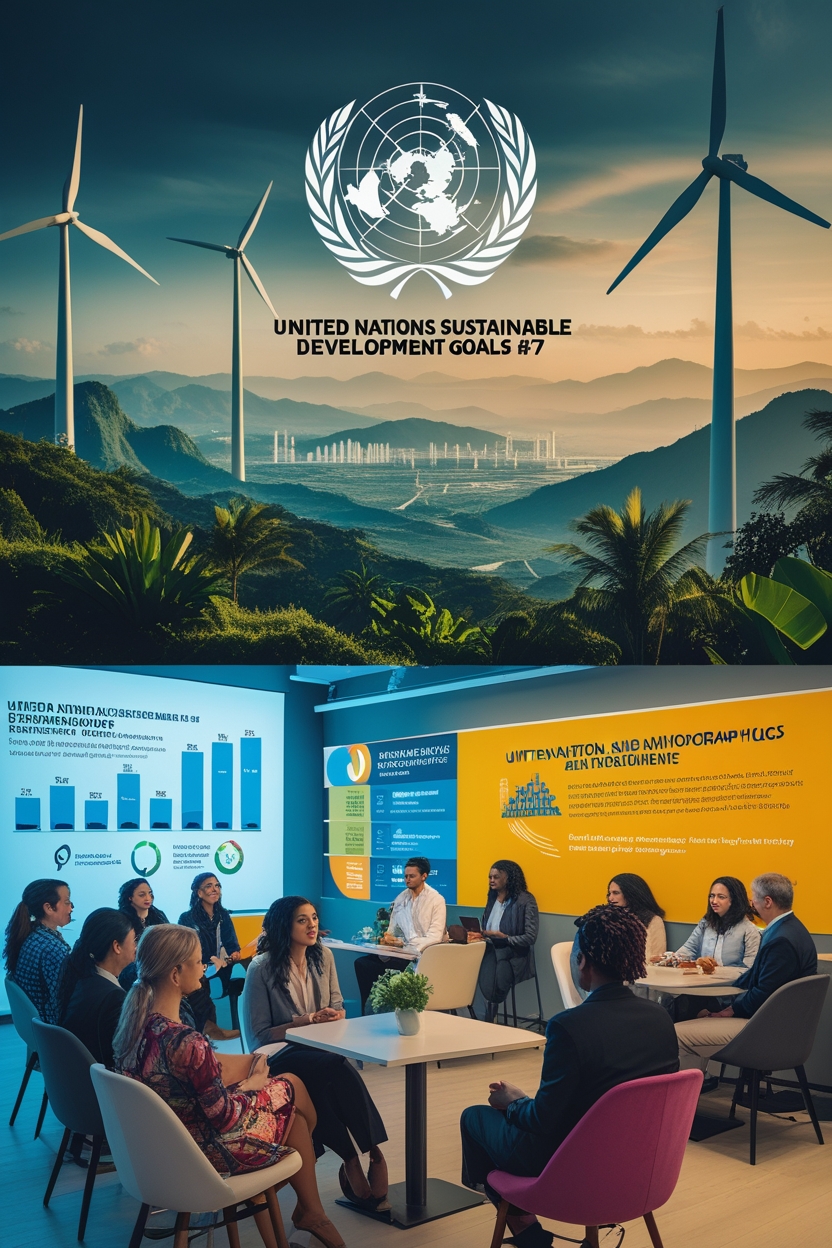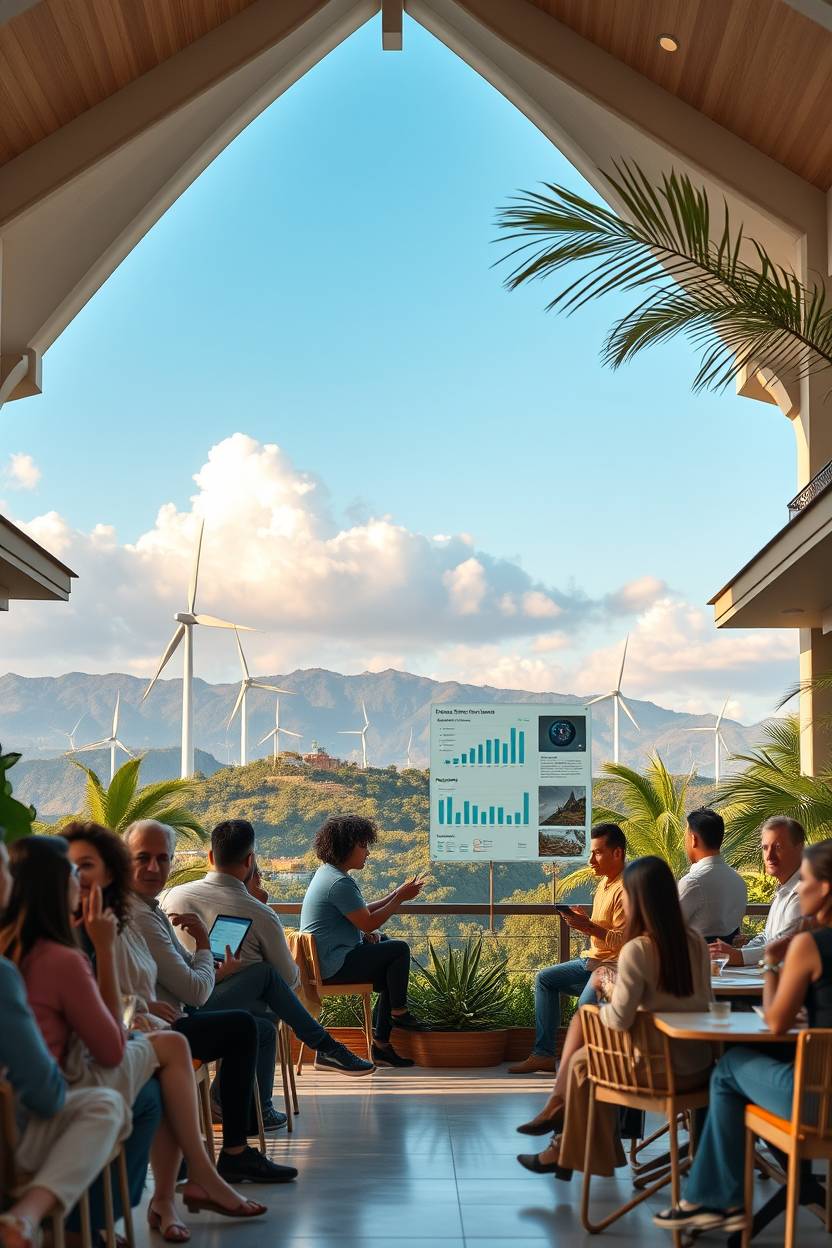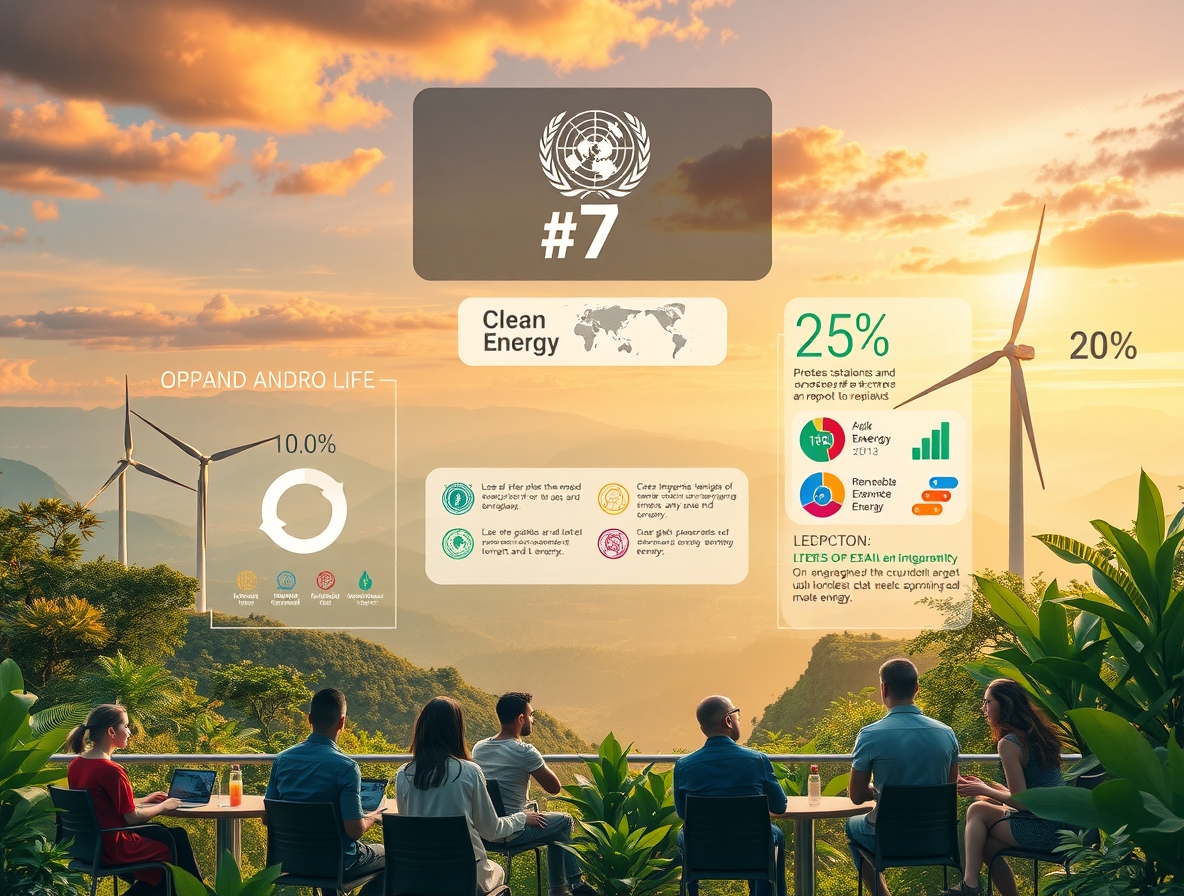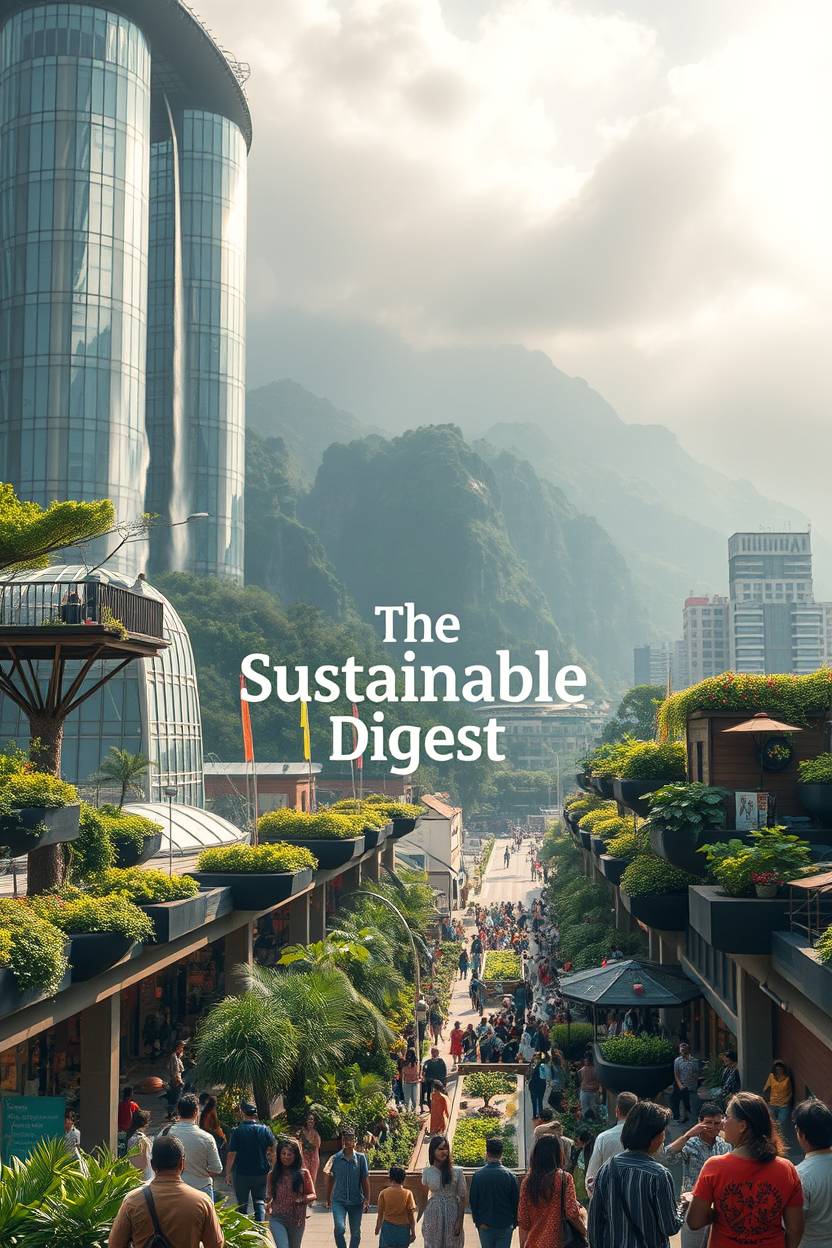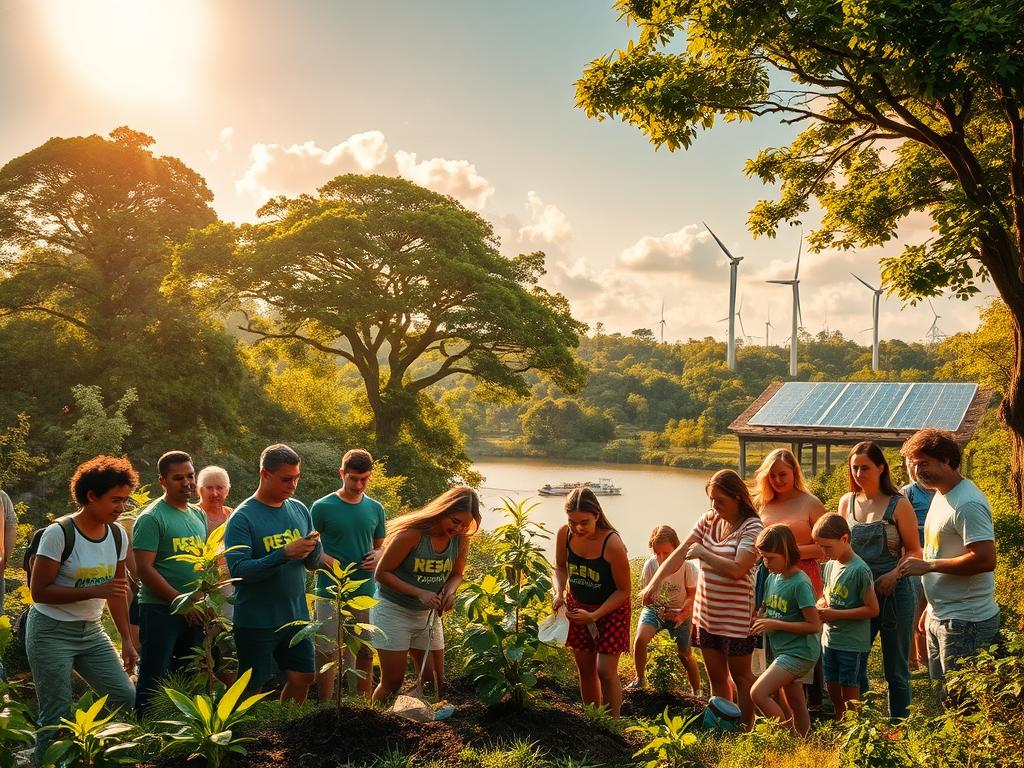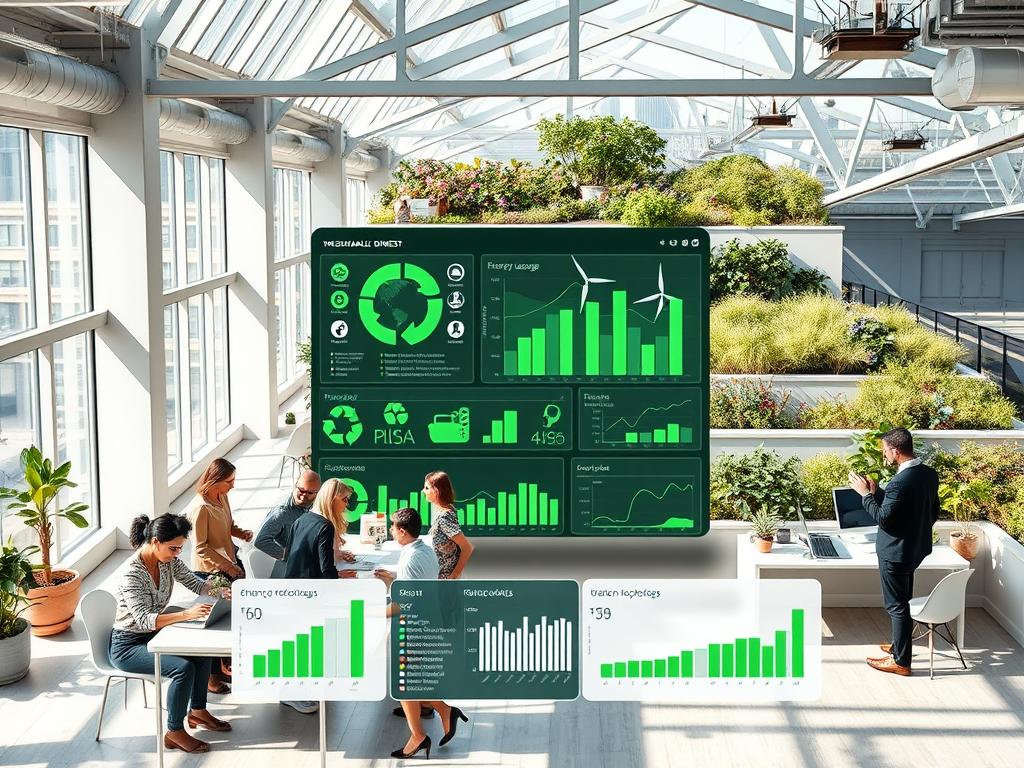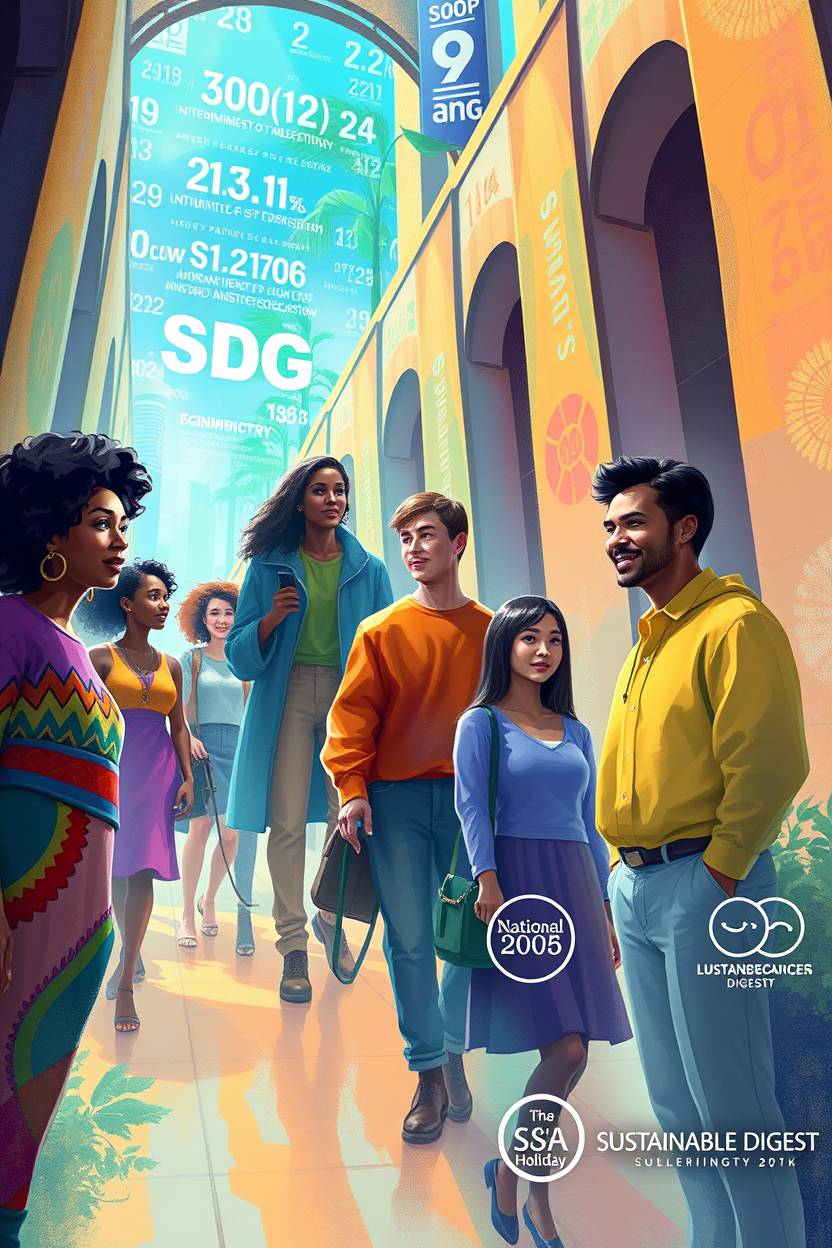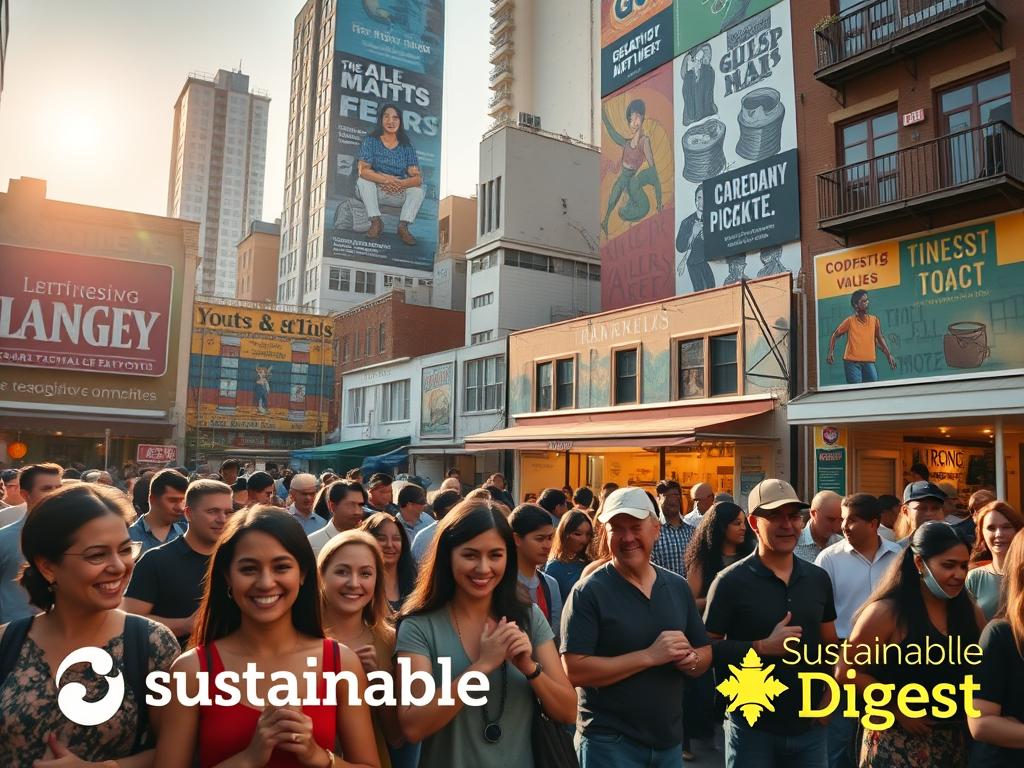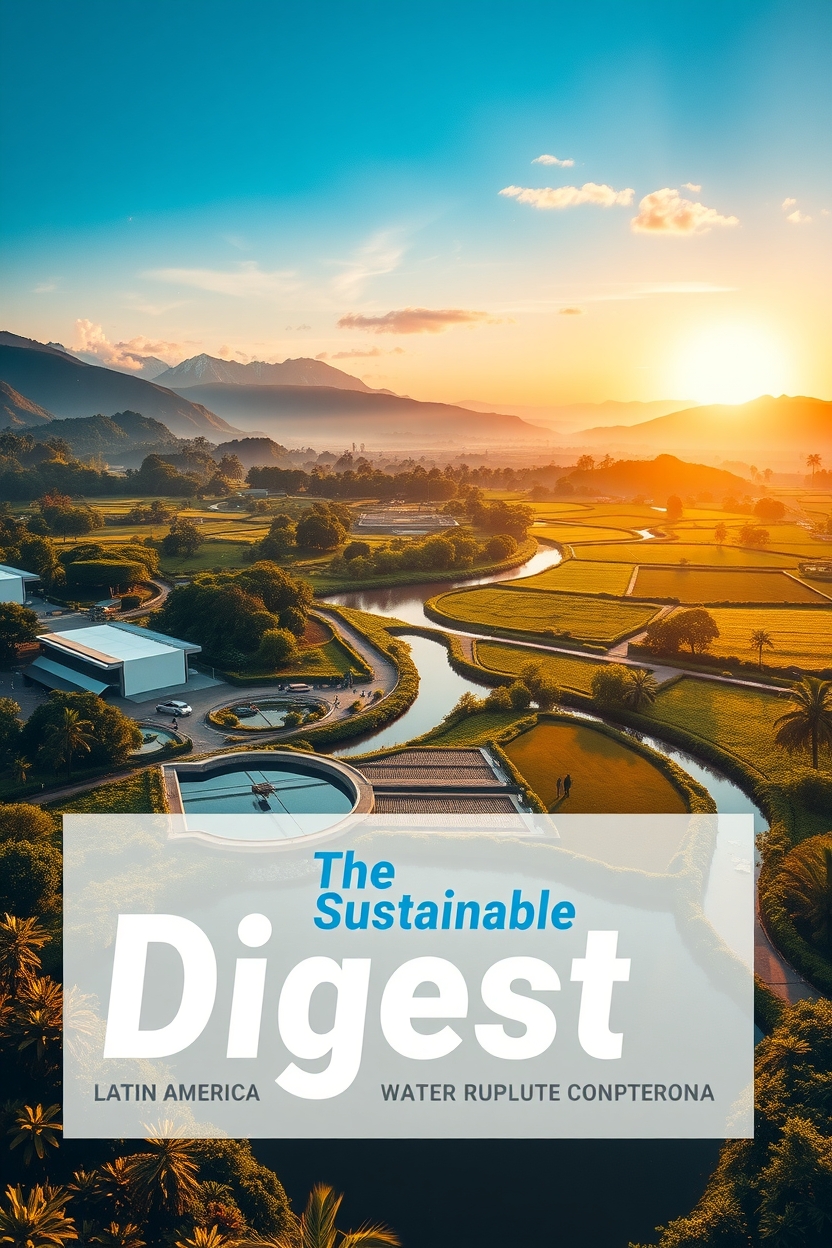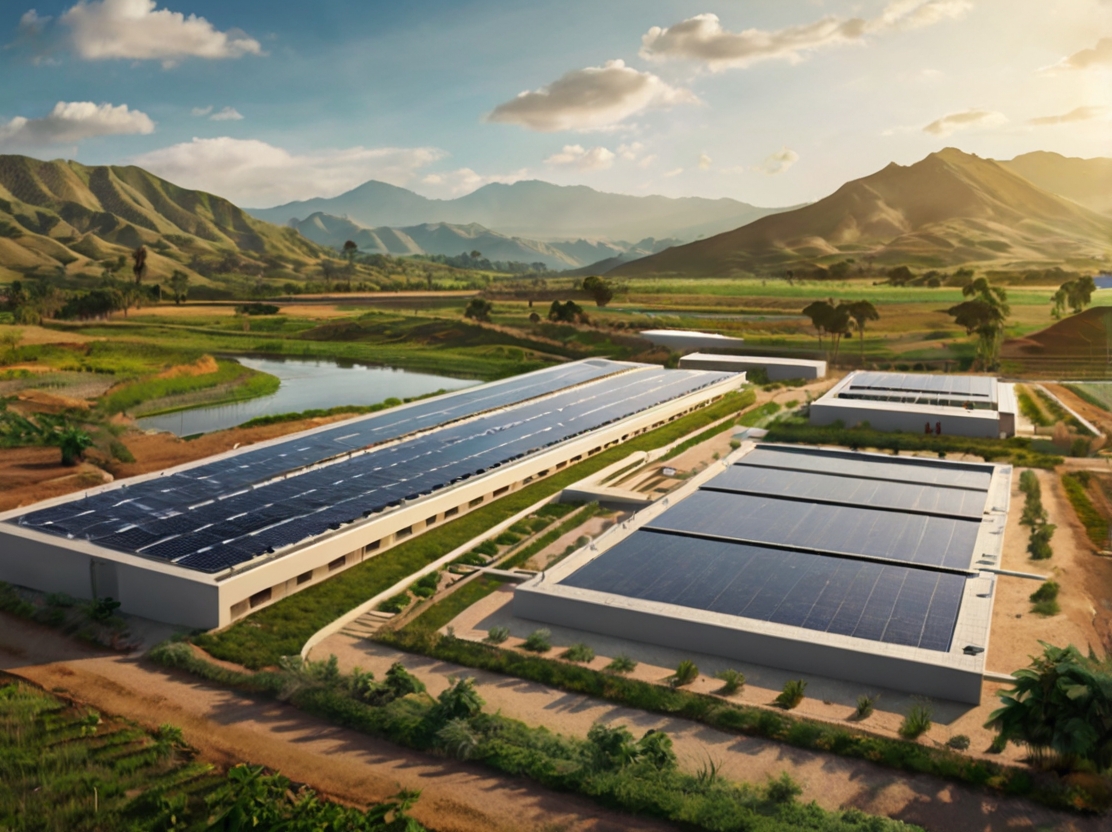
The week of June 22-28 is a key time for global events focused on sustainability. It brings together different sectors and communities. They all work together to meet the United Nations Sustainable Development Goals (UNSDGs).
Sustainability is the main focus during these important days. It gives people and groups chances to tackle big environmental, social, and economic issues. From new sea technologies to saving rainforests, these events show how our planet’s problems are linked.

People around the world will look at ways to fight climate change and save nature. They will also find ways to make industries more sustainable. This week’s efforts are a big step towards making the world a better place.
Week of June 22-28 through global observances, UNSDGs, and sustainability
The week of June 22-28 is a key time for global awareness and action. It focuses on sustainable development. These events bring attention to important challenges and encourage progress in many areas.
Several important global events happen during this week. They show our dedication to solving big environmental and social problems:
- International Day of the Seafarer honors the vital role of sailors in trade and protecting our oceans
- World Rainforest Day emphasizes the need to save our rainforests
- United Nations Public Service Day celebrates new ways to govern sustainably
- International Women in Engineering Day encourages more women in tech
Each event ties into the United Nations Sustainable Development Goals (UNSDGs). This creates a strong plan to tackle global issues. These events show how focused efforts can lead to real change.
“Sustainable development needs everyone working together and sharing goals.”
These observances highlight achievements, protect our environment, honor public service, and push for tech inclusion. They weave a story of global unity and advancement.
International Day of the Seafarer: Advancing Maritime Sustainability

The maritime industry is key to global sustainable development. It plays a big role in protecting the environment and conserving marine life. Every year, the International Day of the Seafarer celebrates the vital work of maritime professionals. They help keep global trade flowing and protect our planet.

Global Maritime Industry’s Commitment to Sustainability
The maritime world is changing with new ways to fish sustainably and protect the environment. It knows it must lessen its ecological impact. Yet, it also needs to keep global trade moving smoothly.
- Implementing advanced fuel-efficient technologies
- Reducing carbon emissions in shipping routes
- Developing marine conservation strategies
- Protecting marine ecosystems through responsible practices
Sustainable Shipping Practices
Shipping companies are using new tech to lessen their environmental harm. Cutting-edge solutions include:
- Alternative low-carbon fuels
- Advanced hull designs for improved efficiency
- Waste management systems
- Digital tracking for optimized routes

Environmental Protection in Maritime Operations
Marine conservation is now a big part of maritime work. Sustainable fishing and protecting ecosystems are top goals for responsible maritime groups around the world.
“Our oceans are our planet’s lifeblood. Protecting them is not just an option, but a necessity.” – Maritime Sustainability Expert
The maritime industry shows it cares about the environment. It proves that making money and protecting nature can go hand in hand.
World Rainforest Day: Protecting Earth’s Green Lungs

World Rainforest Day reminds us of the crucial role rainforests play. They are not just trees but complex systems vital to our planet. They provide essential services that keep our world healthy.
Rainforests are key to fighting Climate Change. They act as massive carbon sinks, absorbing billions of tons of carbon dioxide each year. This makes them vital in the battle against global warming. These green lungs of our planet are home to about 50% of the world’s plant and animal species.
- Support critical Biodiversity preservation
- Regulate global climate patterns
- Provide habitat for millions of species
- Generate oxygen and absorb carbon dioxide

Conservation efforts are growing globally. Indigenous communities, environmental groups, and governments are working together. They aim to protect these vital ecosystems. Sustainable forest management helps preserve rainforests while supporting local economies.
“Protecting rainforests is not just an environmental challenge, but a global responsibility.” – Environmental Research Institute
Strategies to reduce deforestation and promote sustainable agriculture are being implemented. These efforts create economic options for communities that rely on forests. By investing in rainforest preservation, we ensure a healthy future for our planet and the life that depends on these landscapes.
United Nations Public Service Day: Fostering Sustainable Governance

The United Nations Public Service Day celebrates the vital role of public servants. They help advance sustainable development worldwide. This day shows how new governance and digital solutions tackle global issues.
Public service groups use technology to make systems better and more efficient. They support the United Nations Sustainable Development Goals. By changing old ways, governments can be more inclusive and flexible.
Innovation in Public Service Delivery
Today’s public service aims to meet complex needs with user-focused solutions. Key innovations include:
- Digital platforms for easy citizen interactions
- Data-driven policy making
- Transparent and easy-to-access government services
Digital Transformation for Sustainable Development
Digital tech is key in making cities sustainable. Smart city projects show how tech can better manage resources, improve infrastructure, and enhance life quality.
Building Resilient Public Institutions
Climate resilience programs are now crucial in public service plans. Governments are building frameworks that:
- Anticipate environmental challenges
- Create responsive infrastructure
- Protect vulnerable communities
By adopting innovation and tech, public institutions can make real progress toward sustainable goals.
International Women in Engineering Day: Championing Sustainable Innovation
International Women in Engineering Day honors women leading in sustainable innovation. They are changing Renewable Energy, Sustainable Urban Development, and Climate Action with new technologies.
Women engineers are key in solving big global problems. They work in many important areas:
- Creating new renewable energy tech
- Building green infrastructure
- Developing climate resilience plans
The field of engineering is changing fast. Women leaders are breaking down old barriers. They bring new ideas that mix tech with caring for the planet. Their work helps a lot in Urban Development and Clean Energy.
“Innovation knows no gender. Women engineers are reshaping our sustainable future.” – Dr. Emily Rodriguez, Renewable Energy Expert
Women engineers focus on several key areas:
- Designing green infrastructure
- Improving renewable energy systems
- Creating climate adaptation tech
- Planning sustainable cities
Companies around the world see the value of diverse views in engineering. By supporting women in tech, we move faster toward Climate Action and sustainable solutions globally.
National Pollinator Week: Safeguarding Biodiversity

National Pollinator Week shines a light on the vital role of pollinators. These small creatures are key to keeping our ecosystems healthy. They help keep our food systems running and support biodiversity around the world.
Importance of Pollinators in Ecosystem Health
Pollinators like bees, butterflies, and hummingbirds are crucial for plants to reproduce and for food to grow. They help plants adapt to changing environments. This is important for climate action.
- Approximately 75% of global crops depend on animal pollination
- Pollinators support over 180,000 plant species worldwide
- Economic value of pollination services exceeds $500 billion annually
Conservation Strategies for Pollinator Protection
Protecting pollinators requires many different strategies. Scientists and experts are working hard to keep these important creatures safe. They are coming up with new ways to protect them.
| Strategy | Impact |
|---|---|
| Habitat Restoration | Creates safe environments for pollinators |
| Reduced Pesticide Use | Minimizes chemical threats to pollinator health |
| Native Plant Cultivation | Provides natural food sources and shelter |

Community Engagement in Pollinator Conservation
Local communities are vital in helping pollinators. Citizen science programs and grassroots efforts let people help directly. They empower individuals to make a difference in preserving biodiversity.
By protecting pollinators, we help keep our ecosystems healthy. This supports global efforts to protect our environment.
Sustainable Cultural Celebrations: Midsummer and Traditional Observances
Cultural celebrations around the world show us how to live in harmony with nature. Events like Inti Raymi and Midsummer show deep ties between people and the earth.
Summer solstice is celebrated in many ways, each highlighting the importance of caring for our planet:
- Inti Raymi: An ancient Incan festival honoring the sun god, emphasizing agricultural sustainability
- Jani: Baltic midsummer celebration focusing on nature worship and ecological balance
- St. John’s Day: European tradition celebrating summer’s peak with environmental reverence
- St. Jean Baptiste Day: Canadian cultural event connecting community and natural heritage
These celebrations are more than just fun. They show a deep understanding of the environment. Traditional observances often integrate sustainable practices that we can learn from today.
| Cultural Event | Region | Sustainability Focus |
|---|---|---|
| Inti Raymi | Peru | Agricultural sustainability |
| Midsummer | Scandinavia | Natural cycle appreciation |
| St. John’s Day | Europe | Community ecological awareness |
Keeping these traditions alive helps communities stay connected to nature. They show us how our heritage can guide us in caring for the earth today.
Climate Action and Environmental Protection Initiatives

The world is changing fast with new ways to fight climate change. New ideas are helping communities and groups tackle big environmental problems. This is leading to big steps forward in using renewable energy and making places more sustainable.
Renewable Energy Advancement
Renewable energy is growing fast in many areas. Countries are working hard to change their energy systems to clean and green ones.
- Solar panel efficiency has increased by 25% in the past three years
- Wind energy capacity expanded by 14% globally in 2023
- Geothermal power projects are gaining significant momentum
Sustainable Urban Development
Cities are key for protecting the environment and being ready for climate change. Urban planners are using new designs to cut down carbon emissions and make communities better.
| Urban Sustainability Strategy | Implementation Rate | Carbon Reduction Potential |
|---|---|---|
| Green Building Standards | 62% | 30-40% emissions reduction |
| Public Transportation Electrification | 45% | 25% emissions reduction |
| Urban Green Space Expansion | 38% | 15-20% local temperature mitigation |
Climate Resilience Programs
Groups and governments are creating plans to help communities and nature deal with climate change. Strategic investments in these plans are making our environment more sustainable.
- Community-based adaptation initiatives
- Advanced early warning systems
- Ecosystem restoration projects
The future of environmental protection lies in collaborative, innovative approaches that unite technology, policy, and community engagement.

Global Unity Through National Celebrations
National independence days are moments of pride and unity. Countries like Croatia, Mozambique, Somalia, Madagascar, and Djibouti celebrate their paths to freedom. They share stories of overcoming challenges and growth.
These days are more than just remembering history. They are chances to talk about progress and dreams for the future. Each day is a time to look back and think about what’s next.
- Croatia Independence Day highlights national determination
- Mozambique Independence Day celebrates cultural resilience
- Somalia Independence Day represents national rebirth
- Madagascar Independence Day embraces ecological diversity
- Djibouti Independence Day symbolizes strategic geopolitical significance

These celebrations mean a lot beyond their own borders. They show how each country’s story adds to a bigger story of global unity and shared experiences. By celebrating different cultures, we learn to respect and work together.
| Country | Independence Significance | Global Impact |
|---|---|---|
| Croatia | 1991 Independence | European Integration |
| Mozambique | 1975 Liberation | Post-Colonial Development |
| Somalia | 1960 Independence | Regional Stability |
| Madagascar | 1960 Independence | Biodiversity Conservation |
| Djibouti | 1977 Independence | Maritime Strategic Importance |
Through these celebrations, countries show their dedication to growth, culture, and working together. Each day is a light of hope, encouraging us to come together and understand each other better.

Conclusion
The Week of June 22-28 was a key time for global events. It showed us important steps toward a better future. Each event tackled big challenges like ocean safety and saving bees.
Sustainability is a team effort. The United Nations Sustainable Development Goals (UNSDGs) help us work together. They show how important it is to care for our planet, people, and economy.
Every person can make a difference. By supporting green energy, protecting nature, or fighting for fairness, we help create a better world. This week reminded us that together, we can make big changes.
We must keep working together. We need to keep learning, supporting new ideas, and staying informed about big issues. Our dedication is what will make the world a fairer, greener place.

Key Takeaways
- Global events during June 22-28 spotlight critical sustainability initiatives
- United Nations Sustainable Development Goals drive collaborative action
- Diverse sectors engage in meaningful environmental protection strategies
- Individual and community participation is crucial for sustainable change
- Innovative approaches emerge to address global environmental challenges









